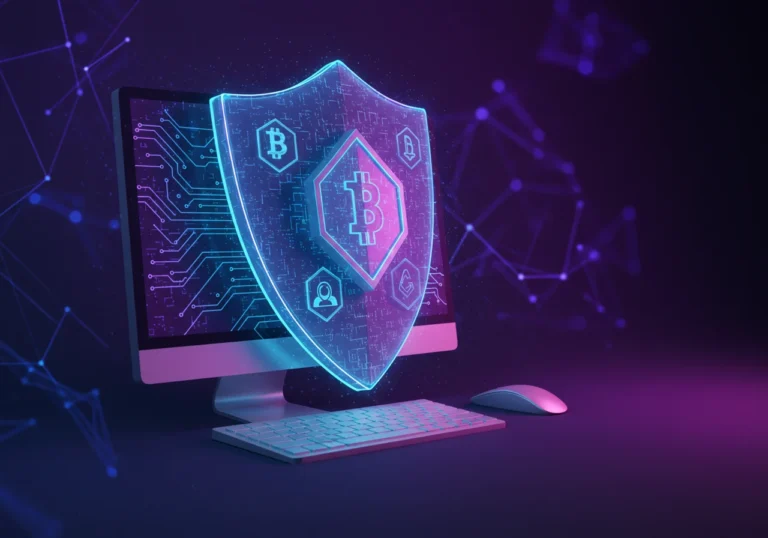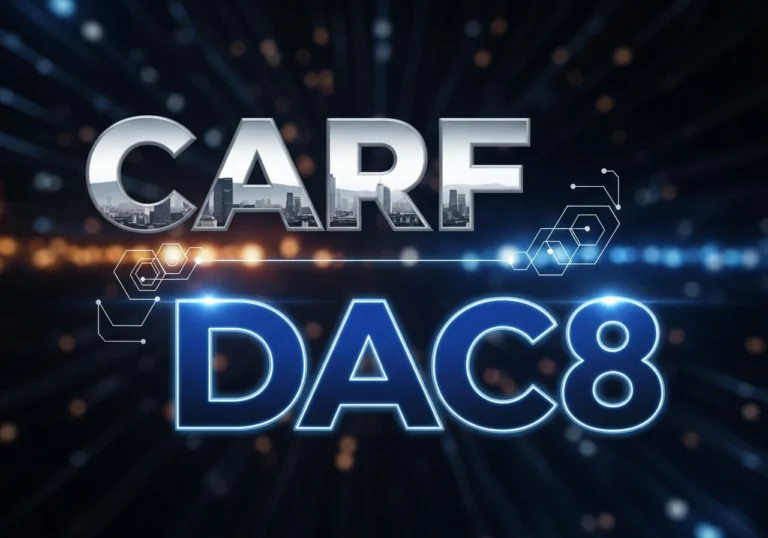What Are ICOs and How to Participate Safely
What are ICOs? They are a way projects raise money in crypto. At the same time, they have a history of great successes and painful failures. If you want to learn how to participate without putting everything at risk, this article walks you through clear, practical steps.
What are ICOs — a simple explanation

What are ICOs in the simplest terms? ICO stands for Initial Coin Offering. It’s a type of crowdfunding where a project sells tokens to early supporters. These tokens may grant access to a product, give governance rights, or simply act like tradable assets.
Imagine a small bakery that needs money to open a second location. Instead of a bank loan, the bakery sells coupons that customers can use later. An ICO is similar, but digital: people pay with cryptocurrencies and receive tokens.
ICOs can be exciting because they let ordinary people support early-stage ideas. But they also bring real risks. Many projects fail, some are scams, and regulation varies widely.
Why people join ICOs
People join ICOs for different reasons:
- They believe in the team and the product idea.
- They hope tokens will rise in value as the project succeeds.
- They want early access to features or governance.
- They want to support a vision or a community.
These are good motives. But hope should be balanced with caution. Know that many things can go wrong along the way.
How ICOs actually work — step by step
Here is a typical ICO flow, in plain terms:
- A project publishes a whitepaper explaining the idea, token model, and roadmap.
- The team announces dates and a sale structure (private sale, presale, public sale).
- Supporters send funds (often ETH or stablecoins) to a smart contract address.
- The smart contract issues tokens to contributors.
- Tokens may be locked, vesting, or tradable immediately, depending on the rules.
Smart contracts automate the process, but they can also contain bugs. That’s why Smart Contract Auditing and careful review matter.
ICO security best practices — how to protect yourself

When you consider participating, follow simple safety rules. These are practical and effective.
Check the team and history
Look for real people with track records. LinkedIn profiles, previous projects, and public interviews create confidence. Anonymous teams are riskier.
Read the whitepaper with focus
A whitepaper should explain the problem, the solution, token economics, and the roadmap. If it is vague or full of buzzwords, be cautious.
Confirm legal and regulatory compliance
See whether the project states its legal structure and jurisdiction. Good projects address Regulatory compliance for ICOs and know the rules in their home country.
Use verified channels
Only use official links from the project’s website and verified social accounts. Phishing sites often copy the real site and trap users.
Check for audits
Smart contracts should be audited by reputable firms. An audit doesn’t guarantee safety, but it reduces the chance of obvious bugs. Look for public audit reports.
Start small
If you decide to participate, use a small amount first. Treat it like a test. Increase exposure only after you understand how the project behaves.
Protect your keys and accounts
Never share private keys or seed phrases. Use hardware wallets when possible. Secure your email and exchange accounts with strong passwords and two-factor authentication.
Track tokenomics
Understand how many tokens exist, how many the team holds, and the vesting schedule. Large team allocations with no vesting are red flags.
These practical habits form a strong base of ICO security best practices.
How to evaluate ICO projects — practical checkpoints
Evaluating a project is both art and method. Use these checkpoints to make decisions more calmly.
The idea and market fit
Does the project solve a real problem? Who benefits? If it’s not clear, that’s a warning.
The team and advisors
Do team members have relevant experience? Have advisors been genuinely involved or just listed for marketing?
Token model and utility
Ask: what does the token do? Is it necessary for the product, or is it just a speculative vehicle?
Roadmap and milestones
Are milestones realistic? Are dates specific? Look for transparency and measurable goals.
Community and communication
A healthy project answers questions honestly. Toxic marketing hype and silence during downturns are red flags.
Technical depth and audits
Is the code open-source? Are there independent audits? Technical transparency shows commitment.
These checks help when you how to evaluate ICO projects as part of your decision.
Regulatory compliance for ICOs — why it matters
Regulation matters because it shapes safety and legal rights. Some countries treat tokens as securities. Others view them as utilities. Knowing a project’s legal stance protects you:
- Projects that ignore regulation may face shutdowns or legal action.
- Compliance can mean clearer investor protections.
- Know if your home country restricts participation in ICOs.
A project that thoughtfully addresses Regulatory compliance for ICOs usually signals maturity.
ICO investment risks analysis — the main threats

Investing in ICOs carries real risks. Here’s a clear analysis of common ones.
Scam or exit fraud
Some projects collect funds and disappear. This is the worst case. Vet teams and keep skepticism high.
Technical failure
A project can fail due to bugs, poor architecture, or inability to deliver.
Market risk
Even successful projects can see token prices collapse. Demand may never materialize.
Regulatory risk
Laws can change. Authorities may freeze funds or ban trading.
Liquidity risk
Tokens may be hard to sell after launch. That can trap funds.
Security compromises
Smart contract hacks, exchange breaches, or wallet compromises can all cause losses.
Performing an ICO investment risks analysis helps you decide how much you can afford to risk.
Safeguarding personal information in ICOs
Your personal data is valuable. Protect it.
- Only provide KYC info to trusted platforms. Confirm the site uses HTTPS and is official.
- Avoid sending sensitive documents to unknown email addresses or chat platforms.
- Consider whether KYC is necessary for the project you want to join. KYC increases privacy risk but may be required.
- Use email accounts dedicated to crypto activity, not your main personal account.
These steps help with Safeguarding personal information in ICOs and reduce identity theft risks.
Practical example: a safe participation checklist
If you want a short routine to follow, here’s a checklist you can use:
- Verify the official website and domain.
- Read the whitepaper and tokenomics.
- Check team members and past work.
- Look for audits and public code.
- Confirm legal structure and compliance statements.
- Join community channels to ask questions.
- Test small: send a tiny amount first (if possible).
- Use a hardware wallet and restricted API keys for exchanges.
- Store KYC docs safely and only where required.
- Keep records: screenshots, transaction IDs, and receipts.
Use this with calm and patience. It’s a practical match for the emotional care you deserve.
What to do if something goes wrong
Mistakes happen. If you suspect a scam or theft:
- Stop further contributions immediately.
- Gather all proof: transaction IDs, screenshots, emails.
- Contact the project (if possible) and exchanges involved.
- Report to local authorities and relevant platforms.
- Share the story in community channels — others may help or warn future users.
Recovery is not guaranteed. But quick action and clear records improve your chances.
Conclusion — thoughtful hope, not blind risk
ICOs open doors for real innovation. They let communities fund ideas directly. But they are not a shortcut to easy gains. If you understand what are ICOs, follow ICO security best practices, and learn how to evaluate ICO projects, you increase your chances of making wise choices.
Be honest with yourself about how much risk you can take. Invest only money you can afford to lose. Ask questions. Test small. Keep your personal data safe. With patience and care— you can support projects you believe in while limiting avoidable loss.
Main Takeaways
- What are ICOs: fundraisings where projects sell tokens to supporters.
- Check team, whitepaper, and tokenomics before joining.
- Use ICO security best practices: audits, official links, hardware wallets.
- Learn how to evaluate ICO projects with clear checkpoints.
- Understand Regulatory compliance for ICOs in the project’s and your jurisdictions.
- Perform ICO investment risks analysis: scams, technical, market, regulatory, liquidity risks.
- Practice Safeguarding personal information in ICOs: limited KYC, secure storage.
- Start small, monitor, and keep records of every step.
FAQ
Q: Are ICOs legal?
A: It depends on where you live and how the token is classified. Some countries treat tokens as securities, others as utilities. Check local laws and the project’s legal statements.
Q: How much should I invest in an ICO?
A: Only invest an amount you can afford to lose. Many experienced participants allocate a small percentage of their portfolio to high-risk early-stage tokens.
Q: Can audits guarantee safety?
A: No. Audits reduce risk by finding common bugs, but they don’t guarantee a project won’t fail or be malicious.
Q: What is vesting and why does it matter?
A: Vesting means tokens are released over time to team members. It prevents instant team sell-offs and aligns long-term interest.
Q: Should I trust anonymous teams?
A: Be very cautious. Anonymous teams increase risk, especially if there are large token allocations to team members with no vesting.
Q: How can I verify a project’s official channels?
A: Use links from the official website, check domain registration, and prefer verified social media accounts. Beware of copycat domains and phishing links.
Table of Contents

Hello, I’m Edmilson Dias, founder of CoinBringer. I created this platform to guide people through the fast-moving world of cryptocurrency with clarity and safety. With years of research in blockchain and digital security, my goal is to translate complex topics into practical knowledge, offering reliable tutorials, safety insights, and guidance for both newcomers and experienced users.
Discover more from CoinBringer
Subscribe to get the latest posts sent to your email.







